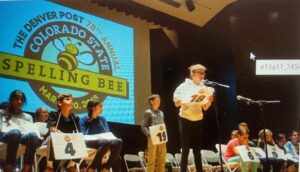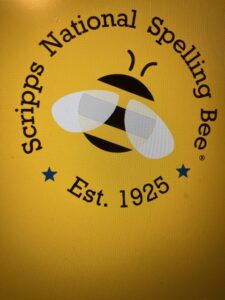Students from three Central Park schools won 13 out of 25 spots in the qualifying round on Feb. 9 for the Colorado State Spelling Bee on March 9.
Denver Green (middle) School Northfield took top honors with 10 winners. Westerly Creek Elementary had two and Willow Elementary placed one student.
In the age of spell check and with spelling seemingly less valued than in the past, why are spelling bees still popular?
Educators note that spelling well helps students understand what a text is saying which improves reading comprehension. It instills the basics of phonics and advanced vocabulary building techniques while enhancing writing skills. By spelling correctly students are more likely to be able to construct sentences properly and write coherently, educators say.
“For kids that excel at it, I think they just like the mental challenge,” said Stephanie Brown, GT teacher at Denver Green.
“A lot of them have naturally very good memories and are avid readers. They like it (spelling bee) because it forces their brains to work in a different way.”
It also helps strengthen their ability to face adversary.
“They learn how to handle high levels of stress,” Brown said. “Learning how to fail and to learn from failure is probably the most important lesson from it.”

Central Park qualifiers for the Colorado State Spelling Bee
- Elliot McGregor, Denver Green School Northfield, 6th grade
- Hudson Olson, Denver Green School Northfield, 6th grade
- Jeremy Przybyl, Denver Green School Northfield, 6th grade
- Adrian Whitworth, Denver Green School Northfield, 6th grade
- Annika Fredrick, Denver Green School Northfield, 7th grade
- Natalia Lucio, Denver Green School Northfield, 7th grade
- Zev Sigel, Denver Green School Northfield, 7th grade
- Caleb Depledge, Denver Green School Northfield, 8th grade
- Finn Meyer, Denver Green School Northfield, 8th grade
- Quentin Whitworth, Denver Green School Northfield, 8th grade
- Finnley Brown, Westerly Creek, 5th grade
- Phoenix Sbrocca, Westerly Creek (5th Grade)
- Rudy Morales-Egizi, Willow Elementary, 4th grade
Inspire Elementary participated for the first time in the city event but none of their students advanced to state.
“They were excited and nervous,” said Principal Linda August. “There were some tears as students misspelled words in their classroom or in the school-wide spelling bee.”
August agreed with Denver Green’s Brown on the challenge the bee presents and the lessons it can instill.
“Something that can be difficult is how to handle it when we do not win or when students put in a lot of effort (studying spelling lists) and do not have the outcome they are hoping for,” she said.
But that’s part of the value of a competition like a spelling bee, August said.
“Giving students an opportunity to strive for success, regardless of how far they make it in the Spelling Bee is character building and it helps students develop academic skills such as language skills, memory and recall and persistence,” she said.
Will it be an annual event?
“Absolutely!” August said.

The three grade-level teams from Inspire that went to the city spelling bee. (left to right)
3rd Grade (Will Stenson, Autumn Rush, and Amelia Vogelgesang); 4th Grade (Addie Tinklenberg, Amelia Hires, Sterling Snider); 5th grade (Ruby Johnson, Kinsley Strickman, and Everett Muther)

- Amir Hassan, Slavens K-8 School, 7th grade
- Laszlo Stone-Potyandy, Denver Language School, 5th grade
- Harper Kannen, Denver School of the Arts 7th grade
- Amy Davis, Denver School of the Arts, 6th grade
- Sebastian Manayo, Denver Language School, 7th grade
- Cassidy Mayer, Denver Language School, 7th grade
- Matthew Faulk, Slavens K-8 School, 7th grade
- Jack Klemt, Denver Language School, 7th grade
- Kaiden Barwick, Denver Language School, 7th grade
- Sylas Rigridge, Edison Elementary, 4th grade
- Beatrix Peterson, Denver School of the Arts, 7th grade
- Callan Martin, Denver Language School, 6th grade
The history of the national spelling, according to the Encyclopedia Britannica:




